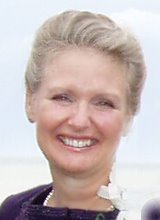

Target audience for Vanity Fair is 39.8 years old with a median household income of $67,626.00. 30.6% are professionals or in management. 37.6% graduated from college. 77% are women, 23% are men. Esquire’s media kit states that it is a magazine for men about men’s interests and passions. The target audience for Esquire is 44.3 years old with a median household income of $59,713.00. 60.5% are professionals or in management, 33.8% graduated from college. 63.2% are men, 36.8% are women.
Vanity Fair is personality driven, focused on human interest. Esquire is about getting the job done and doing it correctly. Esquire writers spend a lot of time defining what “correct” is but Esquire is frequently playful and tongue-in-cheek. Vanity Fair writers are more serious. Both write to an informed audience.
In the Vanity Fair article, focus remained on human tragedy and the blindness of greed. The bad guys preyed upon people unused to confidence games, duping them out of their savings. The article is sympathetic to the victims but the final paragraph suggests a little homework and a lot less trust might have saved the victims much unhappiness. The article was written to a group with a solid liberal arts education. Words such as debacle and esoteric seemed appropriate. Esquire readers are more proactive. The Esquire article did not focus on any individual, rather, scenarios illustrating typical real estate scams were delineated. A sidebar listed ten tips for avoiding real estate fraud, a typical device in Esquire.
Vanity Fair’s layout is open, with lots of white space, captions are in distinctive red boxes with drop shadows. Type is set gracefully with plenty of leading. In my final design, I decided to leave the red boxes out. Only the standing head got a red box. The pull quote was in type only slightly smaller than the headline. and there was one image for the headline and one on the second page. The article was very tightly gridded. Approximating the Vanity Fair fonts, I used Futura for the captions, Bodoni BE for the headline and Garamond Premier Pro for the body copy.
Esquire was also on a very tight grid. Because of the lines used in the layout, the grid is quite a bit more evident. The colors are a progression from black to red signifying money loss. [This was an Amy suggestion and I really liked it, thank you.] I chose an urban chic color scheme also influenced by the prominent colors in the photos and limited the color pallet to four colors. Running the headline and the deck at a negative leading ratio is one of the devices used frequently in the magazine. I approximated the type using Caslon for the headline and Bodoni for the body. All sans serif type is Helvetical Neue.
The final was a struggle. It was fairly easy defining the styles of the two magazines and following their formats. Finding my own voice while respecting their design proved quite a bit more challenging.

No comments:
Post a Comment